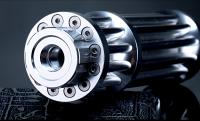
 Quasi-continuous fiber lasers usher in gold development period. For enterprises, there are many reasons for the use of quasi-continuous (QCW) fiber lasers, such as fiber lasers combined with a pulsed Nd: YAG blue laser pointer drilling and welding advantages and a CO2 laser cutting capacity. In the past, many companies also had CO2 lasers and Nd: YAG lasers to cope with a wider range of processing needs and applications. QCW fiber lasers can operate in pulsed and continuous (CW) mode, so a single laser can handle a variety of machining tasks that require two different lasers in the past.
Quasi-continuous fiber lasers usher in gold development period. For enterprises, there are many reasons for the use of quasi-continuous (QCW) fiber lasers, such as fiber lasers combined with a pulsed Nd: YAG blue laser pointer drilling and welding advantages and a CO2 laser cutting capacity. In the past, many companies also had CO2 lasers and Nd: YAG lasers to cope with a wider range of processing needs and applications. QCW fiber lasers can operate in pulsed and continuous (CW) mode, so a single laser can handle a variety of machining tasks that require two different lasers in the past.